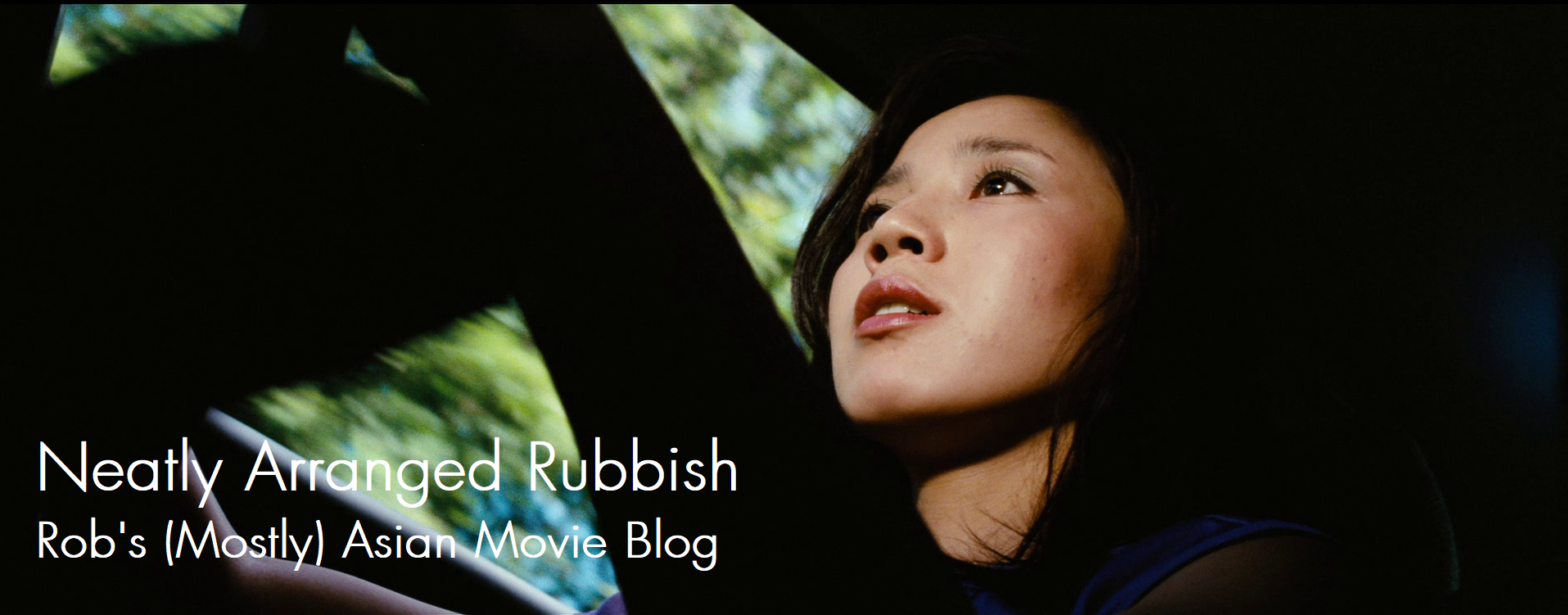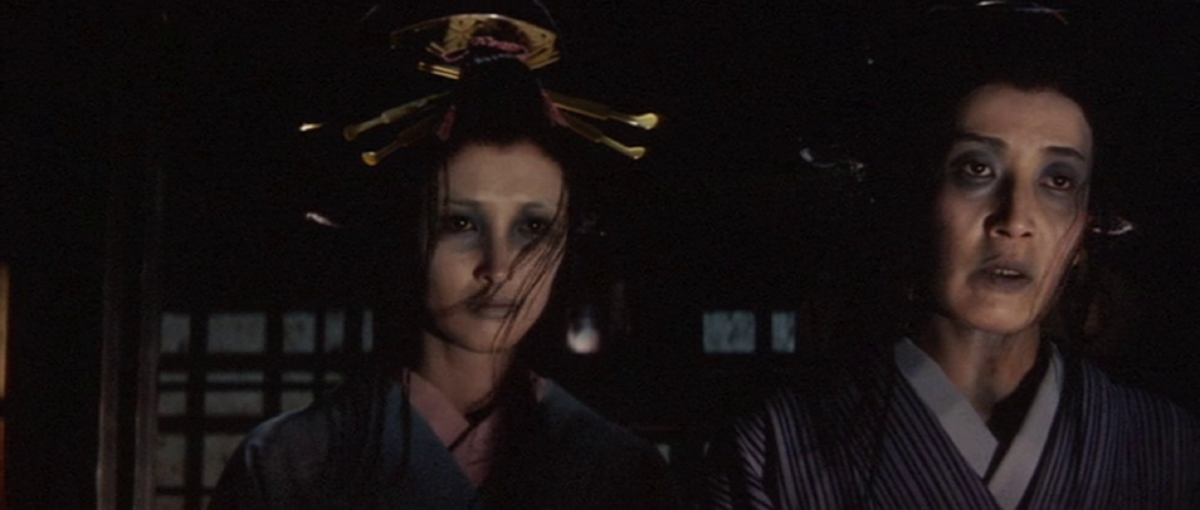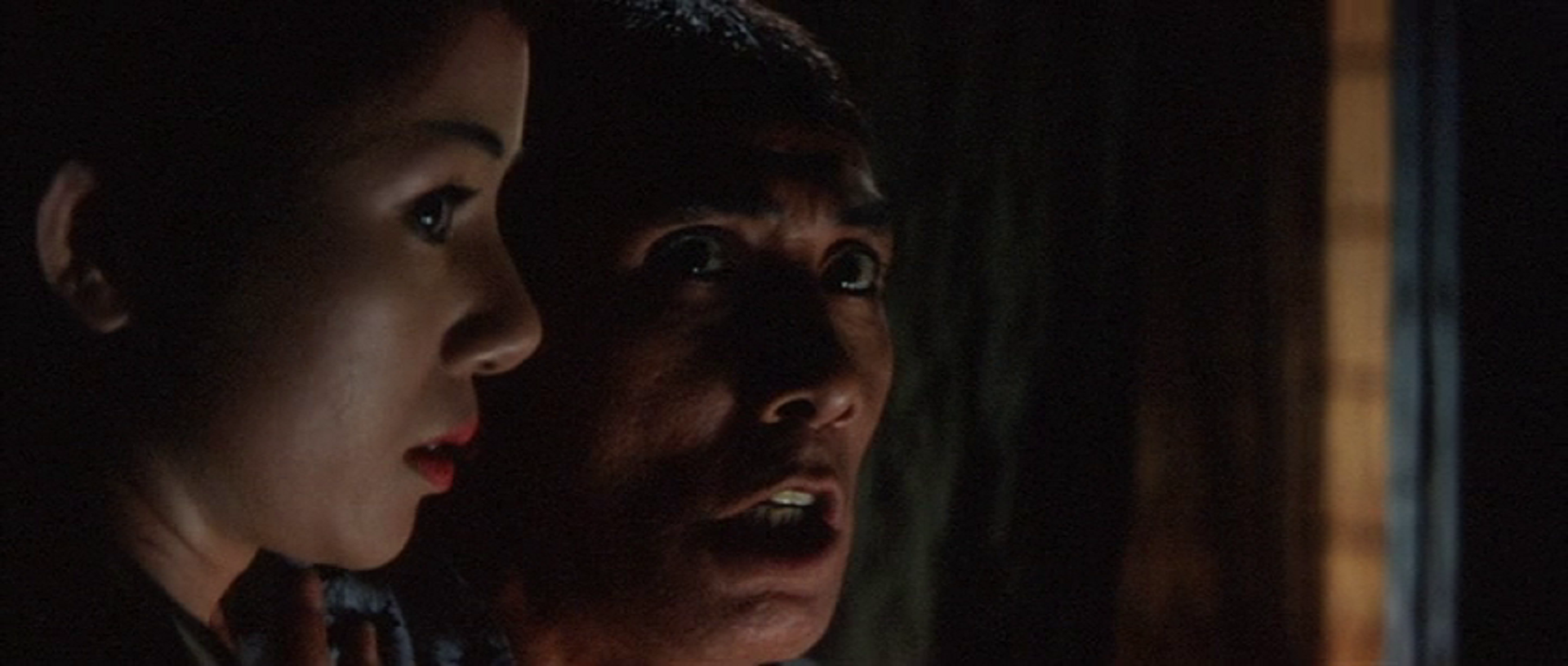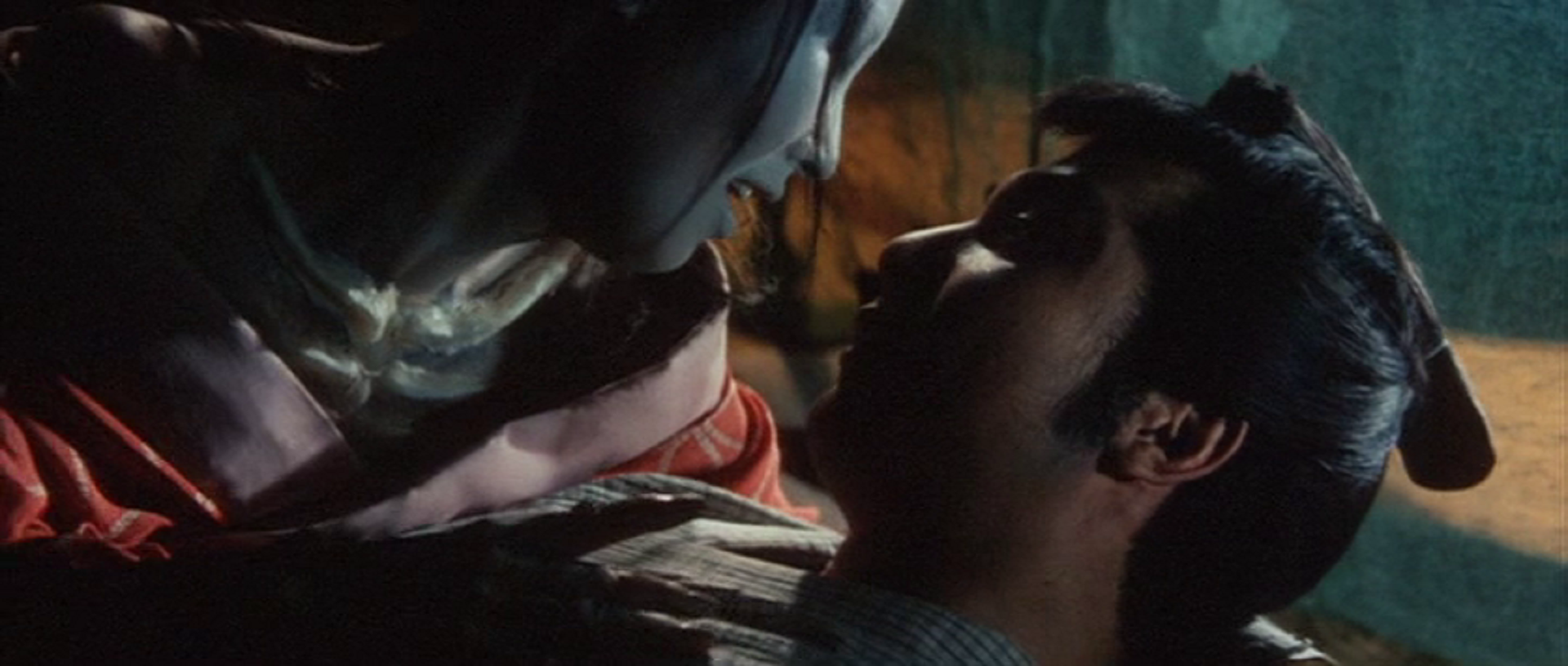Last Updated on January 20, 2021 by rob
Schoolteacher Shinzaburo (Kojiro Hongo) meets a beautiful courtesan named Otsuyu (Miyoko Akaza) and her maid Oyone (Michiko Otsuka), during the summer Obon festival. Obon is the one week in the year when the spirits from the netherworld are allowed into this one and sure enough Otsuyu and Oyone turn out to be ghosts. Servant Banzou (Ko Nishimura) and a local fortune teller (Takashi Shimura) try and save him but neither has reckoned on Banzou’s greedy wife (Mayumi Ogawa) or the genuine love between Shinzaburo and Otsuyu.
Whom would you prefer to spend your life with – a living woman who might as well be dead? Or a dead woman who’s very much alive? That’s the conceit behind this darkly romantic ghost story which successfully cloaks its true intentions until late in the game. Despite being produced on what I presume is a fairly modest budget this Daei production does a first class job in all respects. Both leads give fine performances. Kojiro Hongo convincingly sells the idea of a good man in love with a ghost even though he knows it’ll be the death of him and Miyoko Akaza is the picture of sweet sincerity and wounded, pitiful innocence as the ghostly courtesan who wants nothing more than to be with Shinzaburo. Supporting players Nishimura and Ogawa make for effective – if perhaps rather broadly played – comic relief, with the pair paying for their greed in truly grisly fashion.
Given their ghostly origins Otsuyu and Oyone’s movements are superbly staged with the characters convincingly appearing to glide rather than walk. In several key scenes they’re on wires and the combination of wire work with other on-set effects seems at times insanely ambitious. In one scene a confrontation between a frightened Shinzaburo and the ghosts has the former lunging wildly at the actresses with a samurai sword (no stunt doubles here) while Oyone ascends into the air on wires and Otsuyu glides effortlessly away from Shinzaburo’s lunges. This is done in a single take, on a cramped set, with the space further constrained by fluid, handheld camerawork that gets right into the action generating a thrilling sense of unpredictability. Like I say, insanely ambitious but even more impressive, they pull it off.
What’s great about the story is that we keep expecting the ghosts to be the villains. But as it turns out it’s the humans – principally Banzou and his wife – who are the real monsters. Does it matter that Otsuyu is little more than a skeleton when the spirit animating those bones is so vital, so full of love? In this respect the film draws a comparison with Kiku (Atsumi Uda), the dead-eyed drone Shinzaburo is ordered to marry by his mother. Director Satsuo Yamamoto even shoots that opening scene in which the pair are introduced as if it were a horror movie. The sense of claustrophobia slowly enveloping Shinzaburo as his mother pushes for them to announce a betrothal is palpable. By contrast the scenes between Shinzaburo and Otsuya have the intimacy of an involving love affair so that our feelings are pulled this way and that as regards the prospect of Shinzaburo being ‘saved’ by his friends (saved from what, exactly?)



